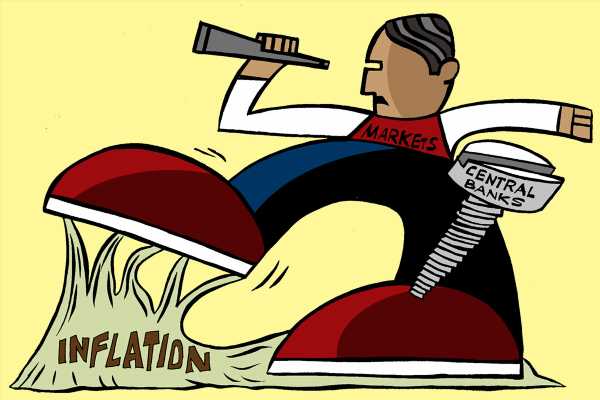‘While foreign institutional investor flows are still negative, they will turn positive in the latter part of 2023 as India’s resilient growth becomes perceptible.’
Sticky inflation and the possibility of longer-than-expected monetary tightening by global central banks, including the Reserve Bank of India, have made markets highly strung.
Jyotivardhan Jaipuria, founder and managing director, Valentis Advisors, in conversation with Puneet Wadhwa/Business Standard, says India is in a sweet spot for the next few years if discussions with most foreign investors are any indicator and they wish to remain overweight on Indian equities.
How do you see the global equity landscape evolve in 2023?
There is room for some optimism. While the market has some hope that the US Federal Reserve will start cutting rates by end-2023 or early 2024, we do not expect any cut by the Fed in 2023, although there could be a long pause.
However, the pause itself will be a positive sign for markets.
There have been six Fed cycles in the past 40 years.
On average, markets have given 4 per cent returns six months after a pause and 12 per cent returns after a year, with only one of six returns being negative.
While these are positive indicators, the one negative to watch out for is the possibility of a recession.
An average recession in the US lasts 12.5 months.
The average stock market returns during a recession have been flat.
After a recession, markets have seen a rebound, with average returns aggregating 15 per cent.
While near-term markets may be under pressure, 2023 will be a positive year for global markets, although a lot of the returns may be back-ended.
The markets are likely to give single-digit positive returns for the year.
Is the possibility of a meaningful correction in Indian markets over the next few months becoming more real?
Near-term movements in the Indian market will be driven by global peers.
Any significant correction will be a buying opportunity.
The gross domestic product growth rate in India will be among the fastest in the world, steering double-digit earnings growth. This will ensure interest in Indian equity markets.
Does the market expect more skeletons to tumble out of Adani Group closet?
The overall debt of the group is manageable, given these are infrastructure assets with regulated cash flows.
The Indian banking system is not at risk since 70 per cent of the overall loans of the group are from foreign banks.
The group may now consolidate its expansion plans and focus on the implementation of existing projects rather than look at new ones.
Which sectors are you overweight/underweight on?
We have two themes for the year.
One, the domestic sectors are likely to continue to do well relative to global-facing ones as the extent of the global slowdown could lead to earnings downgrades in sectors reliant on the global economy.
Two, within India, the investment-oriented sectors will fare better than the consumer-leaning ones, given the government’s capital expenditure push.
In line with this theme, we are overweight on banking and capital goods.
Another broad theme we are overweight on is linked to companies that saw severe margin compression last year due to high commodity prices, such as cement and ceramic.
These sectors will see margins reverting to mean, in turn driving stock performance.
China and Taiwan are some of the markets that have been on foreign investor radar. Do you see a capitulation any time soon?
India, Brazil, and Indonesia were some of the best-performing countries for 2022.
However, from late 2022, the unlocking of China and the expectations of a Fed ease led to a strong performance by all countries that underperformed in 2022.
China was a big gainer, rising nearly 50 per cent from its lows in a few months.
Our discussions with most foreign investors suggest that India is in a sweet spot for the next few years, and they wish to remain overweight on Indian equities.
But what are their overarching worries?
Relative valuations with price-to-earnings valuations trading at over 100 per cent premium to emerging market valuations are the biggest concern.
With a rally in other countries, a narrowing of this valuation premium will help flows into India.
While foreign institutional investor flows are still negative, they will turn positive in the latter part of 2023 as India’s resilient growth becomes perceptible.
How big a threat is sticky inflation to the market sentiment back home?
While inflation has been sticky, we think it is peaking and will come within the RBI band this year.
Monetary policy works with a lag, and we are likely coming to the end of the interest rate-hiking cycle with probably another 25 bps expected in the next policy meeting.
The market is not factoring in any major interest rate hike. The consensus is that we are close to a prolonged pause in the rate hike cycle.
Source: Read Full Article

